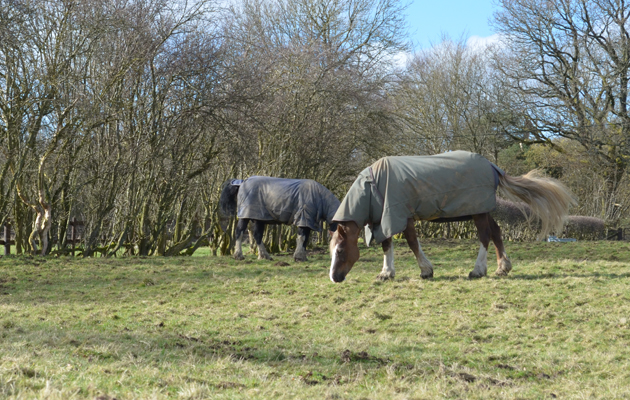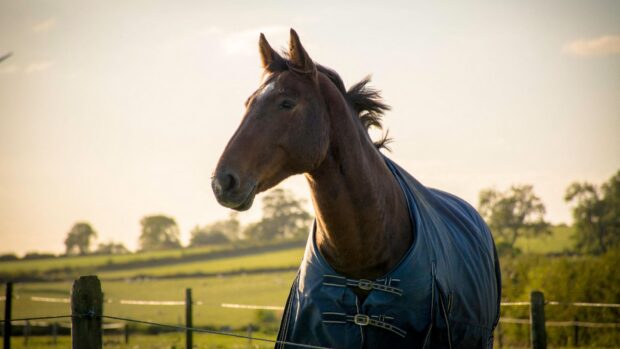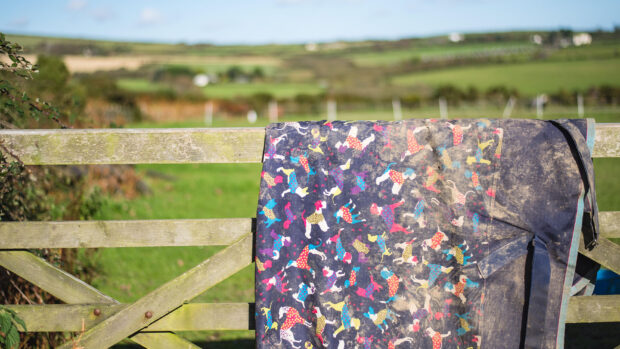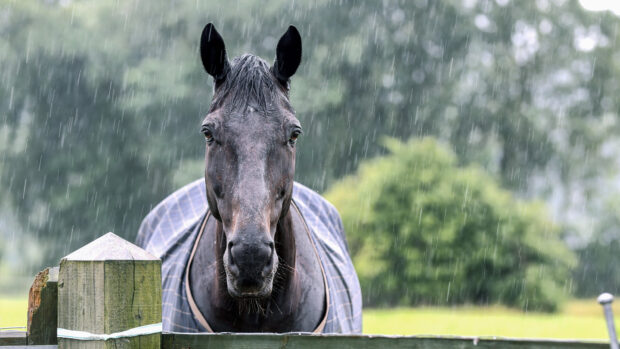The dilemma of which winter rug to put on your horse is one with which we are all familiar, so we ask the experts how to make sure your horse is comfortable in his turnout rug this winter
How do you choose the right rug for your horse?
“There are a number of factors to consider when choosing the right rug for your horse,” says Tracey Woods, operations director for Westgate EFI.
“For example, if your horse or pony is elderly or prone to weight loss, or fit, lean and clipped out, he will need a warmer rug than a well-conditioned native breed or part-clipped equine getting little or no work.”
Consider your horse’s environment, too.
“Is his field in an exposed position?” Tracy asks. “Shelter, as well as access to forage, will affect his ability to maintain optimum body temperature.”
What if you can’t pop back to the yard and swap your horse’s rug? What can you do to ensure your horse is comfortable regardless of the weather?
“At certain times of the year, such as autumn and spring, you are having to rug for a wide range of temperatures,” says Wolverhampton vet and racehorse trainer Sue Taylor. “It’s warm in the middle of the day, but cooler overnight and first thing in the morning, so rug for the median temperature.
“Using a wicking sheet under winter rugs keeps rugs clean and draws moisture away from the skin. If your horse is too warm and breaks out, he won’t be standing in damp, cold rugs.”
A breathable rug will also help with temperature control.
“Neck covers and removable liners make rugs versatile and save time, and breathable rugs allow moisture to escape, stopping the horse becoming too sweaty,” adds Sue. “Modern rugs are very efficient and trap a lot of air underneath, so they are better at equilibrating the temperature.
“It’s vital that any rug fits your horse well to prevent rubbing, and always allow sufficient time for your horse to cool off after exercise before rugging up.”
As Horseware’s founder Tom MacGuinness explains, humidity also plays a key part alongside temperature.
“The horse is more comfortable if the humidity is low, as lower relative humidity allows the horse to lose heat,” he says.
“If it’s a very humid day, however efficient your horse’s rug may be, it cannot transport enough moisture into the air, and you may end up with a sweaty horse. In this case, less is more.”
Is it better for a horse to be too hot or too cold?
“It’s easier for horses to warm up than cool down, so I prefer mine to be on the cool side,” says Sue. “It depends a lot on the breed — fit thoroughbreds with thin skin and short hair need more rugs and feed to keep warm than, say, a hairy, fat cob who could probably survive the winter on his fat stores alone.”
Tom agrees: “You want the muscles to be doing something. If a horse is too hot, he has to back off his metabolism because he has to stop producing heat, whereas he can easily make up the difference by producing heat if he’s cold.”
It’s also advisable to rug your horse gradually, rather than piling rugs on at the first sign of autumn.
“I would say it takes a horse’s metabolism 10 days to acclimatise to wearing a rug,” Tom says. “The best thing is to rug slowly: start with a 100g rug, then work up. Don’t slap on a 300g rug straight away.”
Like this? You might also enjoy reading these:
8 events to make the most of before winter sets in
8 ways to reduce your hay bill this winter
How can you tell if your horse is the right temperature?
“The easiest way to check is to place a hand under his rug by his shoulder. If he feels cold to touch, he’s too cold and if he’s hot and clammy, he’s too hot. It’s that simple,” says Sue.




